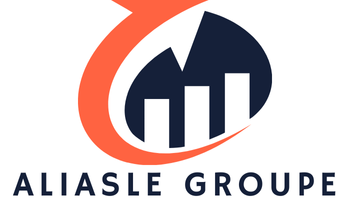Importance of Podcasts in Museums
Podcasts have increasingly become a crucial tool in museums for enhancing visitor engagement strategies and expanding museum marketing efforts. As their popularity surges among diverse audiences, they present a unique medium for museums to connect with their visitors beyond physical boundaries. The appeal of podcasts lies in their accessibility and ability to deliver compelling audio storytelling, which significantly enhances the visitor experience.
Podcasts in museums offer a chance to delve deeper into exhibits, sharing stories and insights that may not be possible through visual displays alone. By creating rich, immersive narratives, museums can captivate audiences, fostering a deeper emotional connection with the exhibits. This form of engagement is critical as it not only attracts new visitors but also retains interest long after the museum visit.
This might interest you : Boosting Customer Loyalty: Innovative Gamification Strategies for UK Retailers
Moreover, podcasts serve as a powerful marketing tool. They can effectively bridge the gap between digital and physical spaces, reaching global audiences and encouraging participation in museum activities. The flexibility of podcasts means they are available anytime, allowing museums to maintain relevance and engage with listeners on their own time, ultimately extending their outreach and impact in innovative ways.
Understanding Your Target Audience
Gaining a deep understanding of your target audience is essential for creating engaging museum content. By conducting thorough audience analysis, you can determine the key demographics of your museum visitors, such as age, cultural background, and interests. This information helps in identifying and prioritizing visitor segmentation, ensuring that different groups’ needs are met.
Also read : Boosting Member Engagement: The Power of Mobile Apps for UK Fitness Centers
When you have a grasp of your audience, it becomes easier to tailor content that resonates with their preferences. For instance, younger visitors might be interested in interactive and modern exhibitions, while older visitors might appreciate historical narratives or contemplative experiences. Therefore, adapting your presentation style and topics is crucial for engagement.
Gathering visitor feedback through surveys is an effective way to refine your content. Ask visitors about their interests, expectations, and experiences to gain valuable insights. This enables you to align your podcast topics with their preferences, enhancing overall visitor satisfaction.
In essence, knowing your audience means creating content that not only attracts but also retains visitors, fostering a deeper connection with the museum. Effective visitor segmentation helps museums make informed decisions that cater to diverse audiences efficiently.
Effective Podcast Formats for Museums
Exploring the right podcast formats is essential for museums aiming to captivate audiences through audio content. Different storytelling techniques can be used to bring museum exhibits to life, each with unique benefits.
Interview-Style Podcasts
These podcasts offer a dynamic way to engage audiences by featuring conversations with museum experts or visitors. This content creation method highlights firsthand insights, making the experience more interactive. By integrating interviews with curators, historians, or artists, museums can provide relatable and personal perspectives that enhance the listener’s connection to the subject matter.
Narrative-Based Programs
Narrative podcasts effectively weave stories around exhibits or historical events. Utilizing strong storytelling techniques, these programs can transport listeners to different times and places, conveying complex ideas in an easily digestible format. By crafting compelling narratives, museums can maintain the balance between entertainment and information, ensuring audiences remain engaged.
Educational Series
An educational series podcast format allows museums to focus on specific themes or topics in depth. This form of content creation educates and informs while keeping the narrative engaging. Incorporating diverse perspectives, such as voices from museum staff and the community, can enrich episodes, inviting listeners to explore various viewpoints and fostering a broader understanding of exhibited themes.
Tools and Technologies for Podcast Production
Creating a podcast involves several crucial components, including podcast production tools, recording equipment, and editing software. The right tools can make or break the quality of your podcast.
For recommended recording equipment, a reliable microphone is essential. Examples include USB microphones like the Blue Yeti, which offer quality sound at a reasonable price. For those with a higher budget, the Shure SM7B is a professional-grade option renowned for its audio clarity.
In terms of editing software, Audacity is a popular choice among budget-conscious podcasters. It allows comprehensive editing features without cost. For more advanced editing capabilities, consider Adobe Audition. It supports multitrack editing and is extensively used by professionals.
Budget-friendly production solutions play an essential role, especially for small-scale operations like in small museums. Portable recording devices such as the Zoom H1n offer flexibility at lower costs, enabling sound capture in various environments.
To optimize sound quality, ensure recordings are made in acoustically treated spaces, or use foam panels to reduce echo. Additionally, mastering the basics of noise reduction in your editing software enhances the final product.
By leveraging these tools carefully, podcasters can achieve high-quality audio outcomes.
Promoting Podcasts to Increase Listenership
In the bustling world of digital content, podcast promotion is crucial to ensure your show stands out. One of the most effective marketing strategies involves leveraging social media, which allows you to connect with potential listeners. By creating relatable and visually engaging posts, you can spark interest and encourage shares, broadening your reach significantly.
Another approach is collaborating with influencers. These individuals often have devoted followings and by teaming up, you can tap into their audience, instantly boosting audience growth. Collaborative episodes or shout-outs can introduce your podcast to new listeners who trust these influencers’ recommendations. Similarly, engaging with local communities and participating in events or local media can establish a loyal listener base.
Creating teasers and promotional materials is another cornerstone of podcast marketing. Short, captivating audio clips or intriguing visuals can pique curiosity and encourage people to tune into your full episodes. These materials, when shared across various platforms, can serve as a non-intrusive introduction to your content, enticing potential subscribers. Through strategic and thoughtful application of these methods, your podcast’s listenership is bound to scale.
Measuring Success and Engagement
Understanding the success and engagement of your podcast revolves around effectively utilising metrics and analytics. Key performance indicators (KPIs) serve as the cornerstone for evaluating podcast performance. These indicators include the number of downloads, average listening duration, and audience growth rate. Each of these metrics provides insights into how well your podcast resonates with listeners.
Tools specialising in tracking listener engagement and demographics offer deeper analysis. Platforms like Apple Podcasts and Spotify provide data on where your audience is listening from, listening habits, and demographic details. Podcasters can assess their content’s impact by monitoring these analytics, enabling more informed decisions.
Visitor interaction can highlight the degree of connection with the audience. Encouraging feedback through comments, social media, and reviews can reveal audience sentiment and areas for improvement. Adjusting podcasting strategies based on this feedback is crucial.
Strategically refining content involves analysing feedback and metrics to identify successful episodes and topics. This information can guide content creation, ensuring it meets audience expectations and boosts podcast performance. Embracing these tools and strategies supports continuous growth and engagement, maintaining a successful podcast in a competitive market.
Case Studies of Successful Museum Podcasts
Delving into the realm of Successful Podcasts, especially in museums, provides invaluable insights. These Case Studies showcase Best Practices harnessed by institutions for impactful storytelling.
Highlighting UK Museums’ Innovations
Several UK museums have embraced podcasting, turning traditional exhibitions into vibrant digital narratives. The British Museum’s efforts exemplify the power of integrating expert commentary with interactive discussions, significantly enhancing visitor engagement beyond physical boundaries. By focusing on coherent narratives and leveraging technology, these institutions have become beacons of digital innovation.
Lessons Learned from Veteran Podcasters
From seasoned podcasters, one learns that curating content which resonates involves understanding audience preferences. It’s not just about stories, but how they are told. Veteran podcasters emphasize authenticity and consistency. These factors form the backbone of any successful podcast, nurturing community trust and widening listener base naturally.
Collaborative Projects and Community Engagement
Collaborations in podcasts often result in enriched content and expanded reach. For instance, joint ventures with local artists or historians can offer diverse perspectives, deeply engaging local communities. Such projects typically face challenges, like differing visions, but focusing on shared goals usually bridges gaps, elevating content while fostering community ties.
Future Trends in Museum Podcasting
As audience preferences continue to evolve, museums must anticipate shifts to stay competitive in the digital landscape. Museums are embracing innovations and digital engagement strategies to attract listeners. This involves enhancing their podcast offerings to cater to more diverse interests and interactive experiences.
Technology plays a pivotal role, paving the way for novel approaches in museum innovations. From VR-integrated storytelling to AI-enhanced content curation, technology allows museums to create more engaging and immersive podcast experiences. Additionally, incorporating interactive elements like live listener participation and real-time feedback could further bind the listener to the content.
Strategies for staying relevant often involve leveraging analytics to understand listener preferences deeply. By tracking engagement metrics, museums can tailor their content to what truly resonates, ensuring that they are not only reacting to trends but actively shaping them.
Ultimately, keeping pace with podcast future trends means museums must adapt and innovate consistently. This requires a balanced mix of cutting-edge technology and an astute understanding of audience dynamics. With these tools, museums are well-positioned to enrich their digital engagement efforts and redefine the cultural podcasting landscape.





